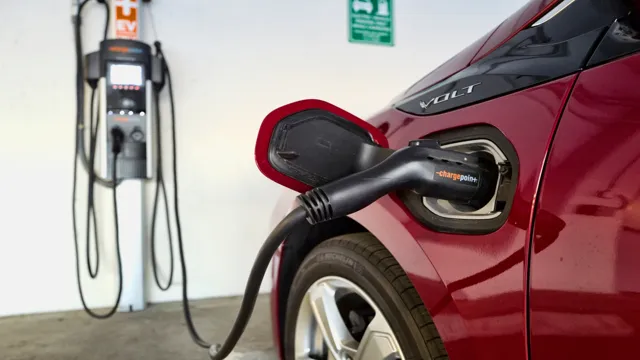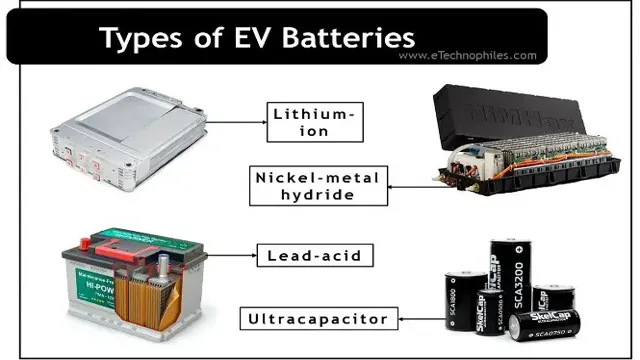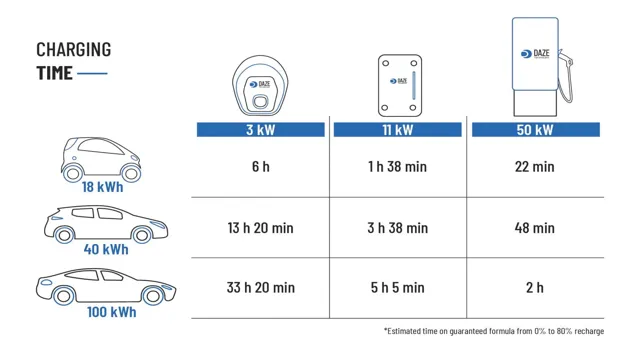Revving Up in the Cold: How Electric Car Batteries Perform in Low Temperatures
We’ve all experienced it: on a frigid winter morning, your car engine struggles to come to life. Imagine that, but with an electric vehicle. With the transition to electric cars, many are skeptical about how well they perform in extreme weather conditions.
Specifically, how do electric car batteries fare in the cold? It’s a valid concern, as battery life is integral to the functioning of an EV. In this blog, we’ll explore the intricacies of electric car batteries and their performance in the cold, answering your burning questions and shedding light on the future of EV technology.
How Cold Affects Battery Performance
Electric car batteries are greatly affected by cold weather, but it’s not just the freezing temperatures that can impact their performance. The chemical reactions within a battery that generate power slow down as temperatures drop, which can lead to reduced range and decreased power. In addition, extremely cold temperatures can cause the battery to become less efficient, ultimately shortening its lifespan.
This is because the cold slows the transfer of electrons within the battery, making it harder to deliver power. However, it’s not all bad news for electric cars in cold weather. Many modern electric cars have features that help to mitigate these effects, such as battery heaters, coolant heaters, and regenerative braking systems.
These systems can help to reduce the impact of cold weather on battery performance and allow electric cars to operate effectively in even the coldest conditions.
Temperature Range for Optimal Battery Performance
The temperature range for optimal battery performance can vary greatly depending on the type of battery. In general, colder temperatures can have a negative impact on battery performance, as it can slow down the chemical reactions that occur within the battery. This can cause the battery to lose charge more quickly and may even lead to permanent damage in extreme cases.
On the other hand, high temperatures can also be detrimental to a battery’s performance, as it can cause the battery to experience more rapid degradation. It’s important to store and use batteries within the recommended temperature range to ensure they last as long as possible and perform at their best. Overall, it’s crucial to pay attention to the temperature range for optimal battery performance and take steps to ensure that your batteries are not exposed to extreme temperatures for prolonged periods of time.

Effects of Cold on Battery Life
When the temperatures drop, it’s not just your body that feels it – your electronic devices also suffer. Cold weather can have a significant impact on the performance of your batteries, and it’s important to know what to expect. When batteries are exposed to low temperatures, their internal chemical processes slow down, causing them to produce less energy.
This means that your phone or camera may run out of juice more quickly than usual, or may even shut down altogether. Additionally, cold weather can cause the metal contacts on your battery to contract, leading to poor connectivity and a weaker charge. To prevent these issues, it’s a good idea to keep your electronic devices in a warm place when not in use, and to avoid using them in extremely cold conditions.
Don’t let cold weather leave you in the lurch – take steps to protect your batteries and keep your devices powered up!
Tips for Cold Weather Driving and Battery Care
Electric car batteries can be affected by cold weather, which can lead to reduced range and performance. To optimize your electric vehicle’s battery during winter, there are several tips to follow. First, preheat your car’s cabin while still plugged in, as this will use electricity from the grid rather than your battery.
You can also invest in a battery warmer to maintain the battery’s temperature and ensure it remains efficient in cold weather. Additionally, try to avoid leaving your car parked in the cold for extended periods, as this can further drain the battery. It’s also important to monitor your battery’s charge level and plan your trips accordingly, avoiding long journeys when you don’t have enough battery power.
By taking care of your electric car battery in the cold, you can enjoy a more reliable, efficient driving experience and reduce the risk of unexpected downtime due to battery issues.
Preheating the Battery
One important tip for cold weather driving and battery care is to preheat the battery before starting your car. Just like our muscles need to warm up before a workout, a battery needs to warm up before being used in cold temperatures. This is because cold weather can significantly decrease a battery’s performance and lifespan.
One way to preheat the battery is to use a battery warmer, which can be plugged in overnight or a few hours before driving. Another option is to keep your car in a garage or covered area to minimize exposure to the cold. By taking the time to preheat your battery, you can ensure better performance and longevity, even in the coldest of temperatures.
Minimizing Power Drain
Winter weather and extreme temperatures can be hard on car batteries and many drivers struggle with minimizing power drain during this time. Keeping a few tips in mind can help prevent battery problems. Firstly, it’s a good idea to warm up the car before driving it.
This helps the battery by allowing it to charge faster. Secondly, limit the use of power-hungry features such as seat heaters and entertainment systems. Turning them off or lowering their usage can save power.
Lastly, try parking in a garage or covered area to protect the battery from extreme cold. These tips can help you minimize power drain during cold weather driving, ensuring that your battery lasts longer and your car remains reliable.
Maximizing Regenerative Braking
When it comes to maximizing regenerative braking, cold weather driving and battery care are crucial factors to consider. Cold temperatures can negatively impact a battery’s performance and reduce its range, making it important to properly prepare before heading out on the road. One way to do this is by preheating the battery using your car’s climate control system or a dedicated battery heating system.
This will help improve the battery’s efficiency and allow for more efficient regenerative braking. It’s also important to drive conservatively in cold weather, avoiding rapid acceleration and braking, which can put extra strain on the battery. Finally, regularly checking your battery’s health and having it serviced if necessary can help ensure optimal performance and extend its lifespan.
Remember, properly caring for your battery and driving smart in cold weather can help you get the most out of your regenerative braking system and maximize your overall driving experience.
Battery Warming Technologies
Electric car batteries are often affected by cold weather, which can reduce their range and efficiency. A solution to this issue is the use of battery warming technologies. These technologies work by heating the battery before and during use, increasing its performance in cold temperatures.
One such technology is thermal management systems, which use heated fluids to warm the battery. Another is resistive heating, which involves placing heating elements directly on the battery. These methods can significantly improve the performance and range of electric cars in colder climates.
By preheating the battery, drivers can optimize their driving range and ensure that they get the most out of their electric vehicle. Overall, battery warming technologies are an important development in the world of electric cars, ensuring that they remain a viable and reliable alternative to traditional gasoline-powered vehicles, even in colder climates.
Overview of Available Technologies
Battery Warming Technologies Battery warming technologies are essential for improving battery performance and extending the overall lifespan of a battery. Cold temperatures can reduce the capacity of a battery, causing it to lose power quickly or not function at all. There are several battery warming technologies that can be used to mitigate these issues.
These technologies include battery blankets, heating pads, and battery heaters. Battery blankets are designed to insulate the battery and prevent heat loss, while heating pads and battery heaters generate heat to warm up the battery. These technologies are particularly useful for vehicles that are used in colder climates, as cold temperatures can have a significant impact on battery performance.
By using battery warming technologies, battery life can be extended, and battery performance can be improved, ensuring that vehicles can operate reliably in all weather conditions.
Pros and Cons of Different Technologies
Battery warming technologies can be beneficial, but they also come with their own set of pros and cons. One pro is that these technologies can increase battery life in cold conditions. This is particularly useful for electric vehicles that operate in colder climates.
However, when it comes to choosing the right battery warming technology, it’s important to consider the different types available. On one hand, there are passive warming methods that use heat insulation materials and thermal blankets to insulate the battery and keep it warm. On the other hand, there are active warming methods that use electrical heating elements to actively warm the battery.
While active methods may be more efficient, they also require additional energy and can impact the overall range of the battery. Additionally, battery warming technologies can add to the cost of the battery and vehicle, making it important to weigh the benefits against the potential drawbacks. Ultimately, choosing the right battery warming technology depends on individual needs and conditions.
Conclusion
In conclusion, electric car batteries and cold weather are like oil and water, they just don’t mix. While modern EV technology has made great strides in improving battery performance in cold conditions, it’s still a challenging issue to overcome. Just like us humans, electric car batteries prefer to stay warm and cozy.
So, next time you’re thinking of taking your trusty EV out in the winter, make sure to bundle up its battery too!”
FAQs
How do electric car batteries perform in cold weather?
Electric car batteries can experience a decrease in performance in colder temperatures, resulting in shorter range and slower charging times. It’s recommended to park and charge electric cars indoors during extreme cold weather.
Can electric car batteries be damaged by extreme cold temperatures?
Batteries can be damaged if they are exposed to extremely cold temperatures for extended periods. To avoid damage, it’s recommended to keep the battery charged, park the car in a warmer sheltered location and avoid exposing the car to temperatures below -20°C.
What are some ways to improve the performance of electric car batteries in cold weather?
One way to improve performance is to preheat the car’s interior and battery while it’s still plugged in before starting it. Using a battery warmer can also help. It’s also important to avoid aggressive driving and to reduce unnecessary heating and cooling of the car’s interior.
How long does it take to charge an electric car battery in cold weather?
Charging times can take a little longer in cold weather due to the lower battery performance, but it varies depending on the type of battery and the charging method used. Level 2 charging can take anywhere from 8 to 12 hours, while fast charging stations can give you up to 80% capacity in as little as 30 minutes.





